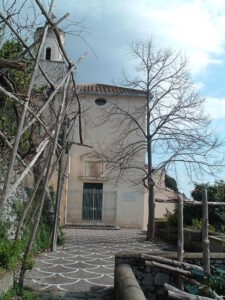MUNICIPALITY: Ravello
NAME: Monument to Umberto I
LOCATION: Piazza Fontana
DESCRIPTION:
On July 29, 1900, the King of Italy Umberto I died assassinated in Monza.
As happened in many Italian municipalities, a proposal was made in the Municipality of Ravello to dedicate a monument to the memory of the deceased sovereign.
During the City Council meeting of December 16, 1900, chaired by Mayor Giuseppe Mansi, with the presence of Councilmen Bonaventura Fraulo, Raffaele Conte, Biagio De Cesare, Luigi Sorrentino, Andrea Amalfitano, Luigi Mansi, Bonaventura Pisacane, Francesco Gambardella, Dr. Angelo Ruocco, Tommaso Amato, Francesco Schiavo, Carlo Filippo De Iuliis and Nicola Mansi, an application was submitted by some young people “full of goodwill,” who had formed a commission for the purpose of having a volcanic stone monument erected in memory of the king.
The commission, composed of Ignazio Fraulo di Bonaventura, Nicola Mansi di Francesco, Luigi Cicalese di Lieto and Vincenzo Mari, after obtaining council approval, was charged with raising a sufficient sum for the construction of the monument – to be placed in Largo Vescovado – and with supervising the execution of the work.
The City Administration’s pledge of contribution was 25 liras, while the personal contribution of the Councilors and City Secretary Gerardo Mansi amounted to 54 liras.
At least four years elapsed before its implementation. On February 18, 1904, the City Council, chaired by Mayor Luigi Cicalese di Lieto, with the assistance of Councillors Nicola Mansi and Alessio Mansi, finally approved the expenditure of 25 liras for “the construction of the monument in Largo Vescovado for King Umberto I.
” The expense was liquidated with a mandate dated the following March 4 in favor of elementary school teacher Vincenzo Mari, probably a representative of the commission established in 1900.
The broken column, a symbol of the tragic end of the Head of State, remained in Largo Vescovado until 1929, when the start of the organic transformation to make it a “square”, and the construction of the pipelines for the building of the aqueduct, with the consequent resurfacing of the pavement, decreed its relocation to a space adjoining Piazza Fontana.
In addition to the reasons of practical necessity mentioned above, the resolution of the Prefectural Commissioner Giuseppe Leonetti of April 29, 1929, pointed out, in the following terms, that the work was poorly harmonized with the surrounding architectural emergencies: “…in such a memory (monument) no artistic merit recurs, therefore because of the characters of its style, the modernity of its workmanship and its very poor expression, it is in clear contrast to the solemnity of the ancient artistic temple in whose presence it stands.” Thus, “having gathered the unanimous consent of citizens, artists and authorities for the destination of this remembrance in a more suitable but less eccentric place for it,” he determined its relocation.
The place identified was, as already mentioned, a piece of land adjoining Piazza Fontana, facing the sea, owned by the municipality and Anna Romano.
Having obtained the authorization from the Royal Superintendence of Medieval and Modern Art of Campania for the removal of the column, Prefectural Commissioner Leonetti, in a note dated June 20, 1929, proposed to the owner of the identified area the purchase of part of her property for the price of 1,200 liras, also obliging himself to fence the purchased ground with an iron railing, to fix the access to the rest of the property, as well as to rebuild the room used as a chicken shelter. In January 1930 the purchase of the land was fulfilled, and after a few months the monument was moved to the site that still houses it today because – as the text of the December 16, 1900 City Council resolution stated – “Ravello, which recalls in history glorious ancient precedents, must be proud to leave to posterity such a precious memory.”
SEE, VISIT, FIND: open to the public
FRUITION DATA: none



